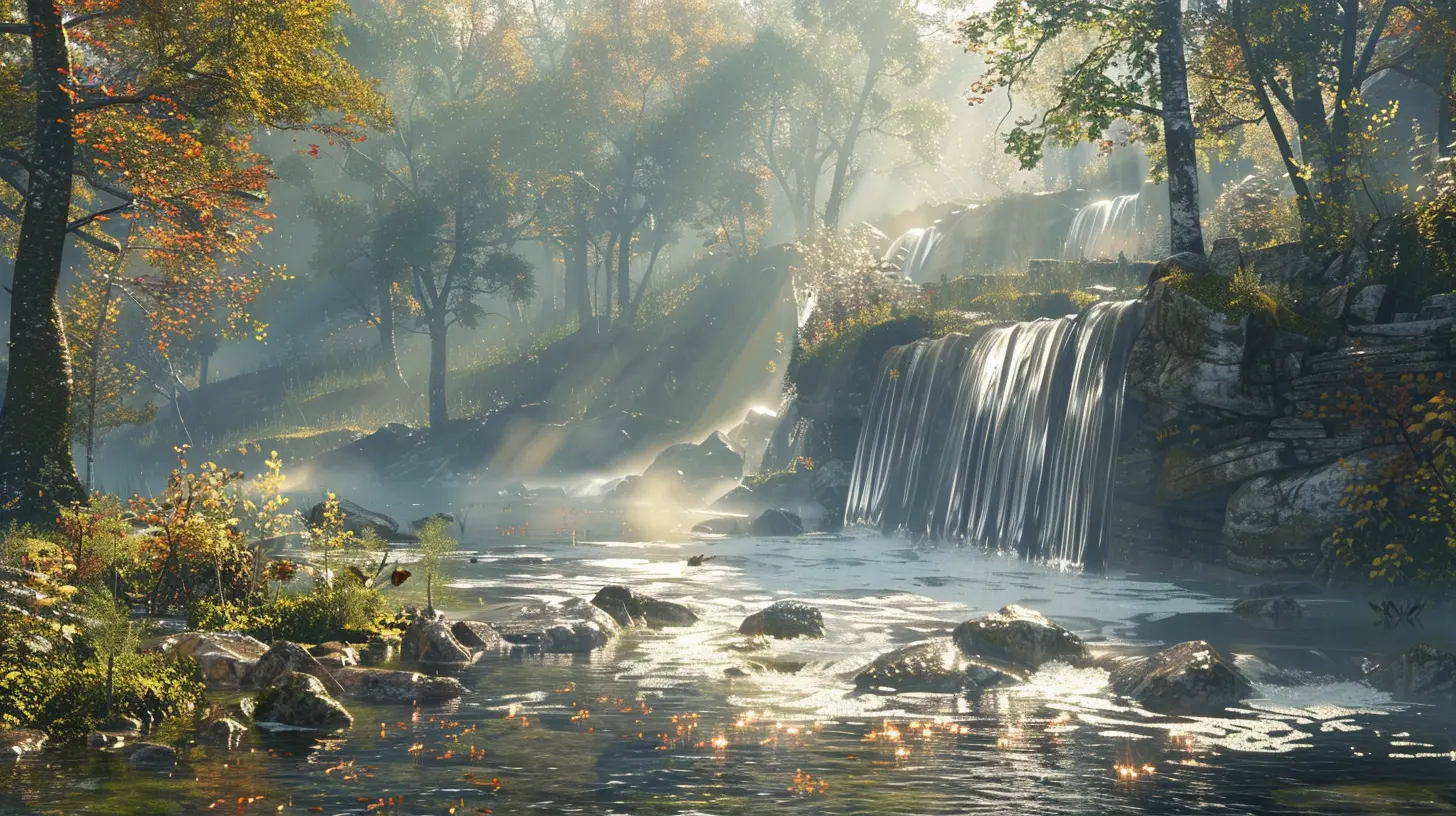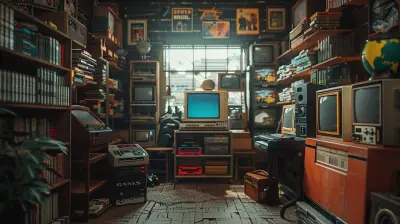Understanding How Physics Simulation Enhances Game Realism
20 June 2025
Ever played a game where a falling object moved just like it would in real life? Maybe you were flung across a battlefield by an explosion, or you watched a car crumple realistically after a crash. That’s physics simulation doing its magic. It's like the invisible wizard behind the curtain, making virtual worlds feel believable. But how exactly does it work? And why does it matter so much in game design?
Let’s pull back that digital curtain and break it down.
What Is Physics Simulation in Games?
Physics simulation in gaming is all about replicating the laws of the real world inside a virtual environment. Whether it's gravity, momentum, collisions, or even fluid dynamics, game engines use math and algorithms to mimic how things move and react.Imagine throwing a rubber ball against the wall. It bounces back, right? Now, imagine doing that in a video game—and the ball just sticks to the wall. Not very immersive, is it?
That's why developers plug physics engines into the heart of their games. They help objects act like they’re bound by real-world rules. We’re talking about things like:
- Gravity pulling objects down
- Collisions causing reactions
- Objects breaking, bouncing, or rolling
The better the physics engine simulates reality, the more immersed you feel. The line between game and reality starts to blur (in the best way).
The Core Components of Physics Simulation
To really appreciate how physics improves realism, let’s peek into the toolbox.1. Rigidbody Dynamics
This is the bread and butter. Rigidbodies let objects have mass, momentum, and respond to forces. Push a crate in a game and it slides or tips based on its weight—that’s rigidbody physics at work.Games like Half-Life 2 were early adopters. Remember the Gravity Gun? It didn’t just look cool—it felt right because the items had weight and inertia.
2. Collision Detection
Physics needs to know when two objects bump into each other. Collision detection constantly checks for overlaps between hitboxes (invisible shapes around objects) and triggers a physical reaction.Without it, your character could fall through the floor like a ghost. Not the immersive experience we’re aiming for.
3. Soft Body and Cloth Physics
Hard metal barrels? Sure, easy. But what about something squishy—like a jelly monster, or a shirt fluttering in the wind?Soft body physics simulate materials that bend, squish, or deform. Cloth physics lets clothes, flags, or capes move naturally with the wind or when the character moves.
Spider-Man’s suit in Spider-Man: Miles Morales? It’s not just a texture—it responds to movement and wind, giving that next-gen feel.
4. Fluid and Particle Systems
Water that ripples when you jump in, smoke that curls up from a fire, or even sparks flying from an explosion—it’s all thanks to complex fluid dynamics and particle systems.Games like Red Dead Redemption 2 use this to create hyper-reactive environments. Mud sticks to your boots, water flows in streams. It’s a level of detail that punches your brain right in the immersion.
Why Physics Simulation Matters for Realism
Let’s face it—immersion is everything. A game might look photorealistic, but if objects behave like they’re made of air or rubber, your brain calls BS.Better Gameplay Interactions
A realistic physics engine doesn’t just make things look good—it opens up new ways to play. Think of puzzle games like Portal. The entire gameplay loop depends on physics.Want to stack crates, swing from ropes, or build your own contraptions? That’s only possible with solid physics foundations.
Emotional Engagement
When the world feels tangible, you care more. Watch a character realistically stumble after getting hit, or feel the weight of a gun through recoil physics—you’re not just playing, you’re experiencing.Horror games leverage this heavily. Things creak, doors shut slowly, shadows dance believably. It’s all game physics playing mind tricks on you.
Increased Replay Value
Open-world games especially benefit big time. With dynamic physics, no two playthroughs feel the same.In The Legend of Zelda: Breath of the Wild, for example, you can light grass on fire to create wind updrafts and launch into the air. The game doesn't tell you to do that—you discover it because the world reacts realistically.
Real-World Physics vs. Game Physics
Now, let's get one thing straight: video games are not 100% accurate reflections of reality. Nor should they be.Trying to simulate real-world physics with full precision would make most games unplayable or downright boring. Imagine if you had to wait 8 hours for in-game concrete to dry or apply Newton’s laws just to ride a bicycle.
So developers strike a balance.
Game physics are like Hollywood stunts—they’re exaggerated just enough to wow us while staying believable. The goal isn’t perfection; it’s perception.
The Importance of “Game Feel”
Have you ever heard developers talk about "game feel"? It’s that intangible quality of movement, weight, and response. And physics play a huge role in it.Shoot a gun and expect a satisfying kick. Drive a car and feel the tires grip as you turn. When these things feel right, you couldn’t care less if the math behind them is off.
Examples of Great Physics Simulation in Games
Let’s nerd out a little and look at games that nailed it.Half-Life 2
Arguably one of the first mainstream games to make physics a core part of gameplay. Moving objects with the Gravity Gun didn’t just look cool—it felt intuitive. It was revolutionary at the time.Red Dead Redemption 2
The attention to detail here is next-level. Watch how your horse kicks up snow, or how your character stumbles on uneven terrain. The world responds to you in ways that feel lived-in and reactive.BeamNG.drive
Ever wanted to see what happens when a truck hits a tree at 90 mph? This game is a soft-body physics sandbox that shows vehicles deform and behave like real-life counterparts. For physics geeks, it’s heaven.Boneworks / Half-Life: Alyx
VR changes the game (literally). Since you interact with objects using your actual hands, physics need to be spot-on to avoid breaking immersion. These games excel at making everything—from boxes to enemies—feel weighty and responsive.The Future of Physics Simulation
With tech evolving fast, so is game physics. We’re heading toward environments where every object, no matter how small, interacts with the world logically.AI Meets Physics
Developers are starting to mix machine learning with physics simulation. AI can now help animate how ragdoll characters fall, or how fluids behave in unpredictable scenarios, adding even more realism.Haptic Feedback and Immersion
Combine solid physics with advanced haptics (like the PS5 DualSense controller), and you don’t just see the action—you feel it. Imagine feeling the tension on a bowstring or the impact of a crash through your fingertips.Real-Time Physics in Multiplayer
One challenge has always been syncing physics in online games. But with better engines and faster internet, real-time physics interactions between players are becoming more reliable and common.Expect future co-op titles where you can build, break, and bash stuff together without a hitch.
Challenges in Implementing Physics Simulation
It’s not all unicorns and ragdolls, though.Performance Issues
Simulating physics in real-time is taxing on hardware. Especially when you want everything to be interactive. Balancing realism and performance is a constant struggle.Unpredictable Outcomes
Physics is, well, unpredictable. A small tweak can break entire systems. Suddenly the game thinks a spoon is a deadly projectile flying at light speed (yes, these bugs happen).Player Frustration
Too much realism can be annoying. Have you ever tried to stack boxes in a game only for them to constantly fall over? Sometimes, developers intentionally “cheat” the physics to make gameplay smoother.Conclusion
So, how does physics simulation enhance game realism? It bridges the gap between virtual and real, drawing us deeper into worlds that react, respond, and feel authentic. It’s one of the unsung heroes of game design, quietly working in the background to make every jump, crash, explosion, or object interaction feel just right.With each new breakthrough in tech, physics in games becomes more powerful—and more invisible. That’s the secret sauce. When it’s done well, you don’t notice it. You just feel like the world is real.
Next time you play a game and knock over a stack of chairs, take a moment to appreciate what’s happening under the hood. That’s not just a cool animation—it’s a mini physics miracle.
all images in this post were generated using AI tools
Category:
Video Game GraphicsAuthor:

Brianna Reyes
Discussion
rate this article
2 comments
Vance Bellamy
Physics simulation profoundly increases game immersion.
June 22, 2025 at 5:01 PM

Brianna Reyes
Absolutely! Physics simulation adds a layer of realism that allows players to interact with the game world in a more believable way, enhancing overall immersion.
Lyla Valentine
Fascinating topic! How do different engines impact realism in gameplay?
June 21, 2025 at 2:51 AM

Brianna Reyes
Different engines utilize unique physics models that affect realism by simulating real-world behaviors differently, influencing player interactions, environmental effects, and overall immersion in gameplay.


